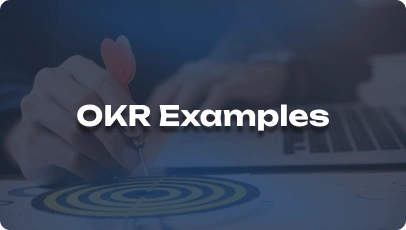Cost Analyst Job Description: A Complete Guide for HR Professionals
What does a Cost Analyst do, and why is this role essential for your business?
In an era where businesses are constantly optimizing their financial strategies, the role of a Cost Analyst is more critical than ever. Cost Analysts help organizations assess their financial efficiency by analyzing costs and identifying areas for potential savings. Understanding this role is key to hiring someone who can offer actionable insights effectively manage stakeholder relationships, and drive your company’s profitability
This guide will walk you through everything you need to know about crafting a Cost Analyst job description. Whether you’re hiring your first Cost Analyst or refining your job listings, this article provides the detailed insights you need to find the right fit for your team.
What is a Cost Analyst?
A Cost Analyst is responsible for evaluating a company’s expenses and recommending strategies to reduce operational costs while maintaining product quality. They work closely with accounting, operations, and management teams to ensure that financial data is accurate and that cost-saving initiatives are implemented effectively. Their primary goal is to improve a company’s bottom line by analyzing data, budgeting, and forecasting costs.
For HR professionals, this means finding someone who not only has a deep understanding of financial data but also possesses strong analytical and communication skills to convey cost-saving recommendations effectively.
Key Responsibilities of a Cost Analyst
A Cost Analyst plays a crucial role in financial planning and cost control. Here are the core responsibilities associated with this role:
- Cost Analysis: Analyze a company’s cost structure, including materials, labor, and overhead expenses, to identify inefficiencies and suggest improvements.
- Budgeting and Forecasting: Prepare accurate budgets and forecasts, considering future financial needs and trends that may impact costs.
- Variance Analysis: Compare actual costs to budgeted costs and explain any variances. Offer recommendations to management on how to address these differences.
- Financial Reporting: Create detailed cost reports to provide management with insights into operational efficiency and cost trends.
- Collaboration with Departments: Work closely with the finance, operations, and procurement teams to develop cost-saving strategies that align with business goals.
- Process Improvement: Recommend changes to operational processes to reduce costs without compromising product quality or efficiency.
- Supplier Negotiations: Assist in negotiating contracts and prices with suppliers to achieve cost savings in procurement.
Take Your Team to the Next Level with Advanced HR Tools!
Streamline & Automate your HR Processes From Hire to Retire
Required Skills and Qualifications
Finding the right Cost Analyst involves seeking a combination of financial acumen, analytical thinking, and problem-solving skills. Here are the key skills and qualifications to look for:
1. Essential Skills
- Financial Analysis Skills: Strong understanding of cost accounting, budgeting, and financial modeling.
- Attention to Detail: A high level of accuracy when analyzing financial data and preparing reports.
- Analytical Thinking: The ability to analyze complex data sets and draw meaningful conclusions to support decision-making.
- Communication Skills: Clear and concise communication skills, especially when presenting cost-saving strategies to non-financial stakeholders.
- Problem-Solving Abilities: Proactive in identifying cost inefficiencies and finding solutions to mitigate them.
2. Preferred Qualifications
- Education: A bachelor’s degree in Finance, Accounting, Economics, or a related field is typically required. Advanced certifications like CPA or CMA are preferred.
- Experience: 2-5 years of experience in cost analysis, financial planning, or a related role.
- Technical Skills: Proficiency in financial software (e.g., SAP, Oracle) and advanced Excel skills are highly desirable.
- Certifications: Certifications in cost management, accounting, or financial analysis (e.g., CMA, CFM) are a plus.
3. Personal Attributes
- Detail-Oriented: An eye for detail and precision in evaluating financial data.
- Analytical Mindset: The ability to think critically and solve complex financial problems.
- Team Collaboration: Strong interpersonal skills and the ability to work effectively with cross-functional teams.
Salary Expectations and Career Growth
Offering a clear understanding of salary expectations and career opportunities can help HR professionals attract top talent for the role.
1. Salary Expectations
- Average Salary: The average salary for a Cost Analyst in the U.S. ranges from $55,000 to $85,000 per year depending on experience and location.
- Location: Cost Analysts in major metropolitan areas, such as New York or San Francisco, tend to earn more due to higher demand and cost of living.
- Experience: Entry-level analysts may start around $55,000, while those with 5+ years of experience can earn upwards of $85,000.
- Industry: Industries like manufacturing, healthcare, and tech often offer higher salaries due to the complexity of their cost structures.
2. Career Growth Opportunities
- Senior Cost Analyst: With experience, Cost Analysts can advance to senior roles, overseeing more complex financial models and cost-saving initiatives.
- Financial Management: Many Cost Analysts transition into broader financial roles, such as Financial Manager or Controller.
- Specialization: Some Cost Analysts specialize in particular industries or cost functions, such as procurement or supply chain management.
- Consulting: Experienced analysts may move into consulting roles, offering expertise to multiple clients on cost control strategies.
How to Write an Effective Job Description for a Cost Analyst
Crafting a compelling job description is key to attracting the right candidates. Here’s how to write an effective Cost Analyst job description:
1. Start with a Catchy Job Title
- Keep it Clear and Specific: Use titles like “Cost Analyst,” “Financial Cost Analyst,” or “Cost and Budget Analyst.”
- Include Level: Specify the level of the position, such as “Senior Cost Analyst” or “Junior Cost Analyst” to attract the right candidates.
2. Craft a Compelling Summary
- Describe the Role in One Sentence: Summarize the main duties and responsibilities. For example: “We are seeking a detail-oriented Cost Analyst to help us identify cost-saving opportunities and optimize our financial strategies.”
- Highlight the Importance: Emphasize how this role is critical to improving the company’s financial health and decision-making processes.
3. List Key Responsibilities Clearly
- Use bullet points to outline the primary duties, such as cost analysis, budgeting, and financial reporting.
- Be specific about the day-to-day tasks to give candidates a clear picture of what to expect.
4. Outline Required Skills and Qualifications
- Separate Must-Have Skills from Nice-to-Haves: Clearly distinguish between essential skills and those that are preferred but not mandatory.
- Include Technical Skills: Specify any tools or software the candidate must be familiar with, such as financial modeling software or Excel.
5. Conclusion: Why the Cost Analyst Role Matters
A Cost Analyst is an essential part of a company’s financial team, playing a pivotal role in cost control and profitability. Hiring the right person for this position can lead to significant cost savings and operational efficiencies. Make sure your job description is clear, concise, and targeted at the right candidates to find the ideal fit for your team.






